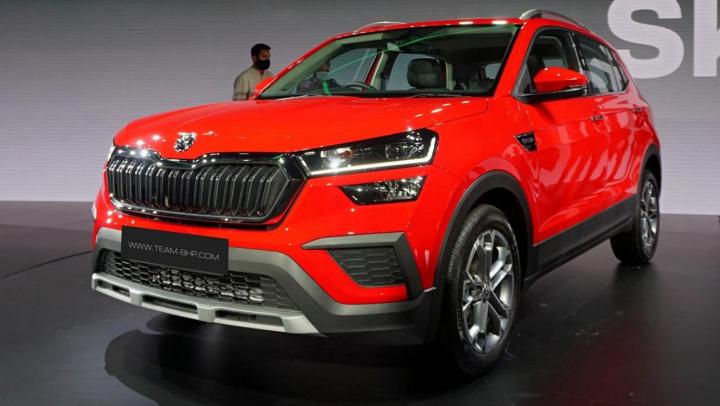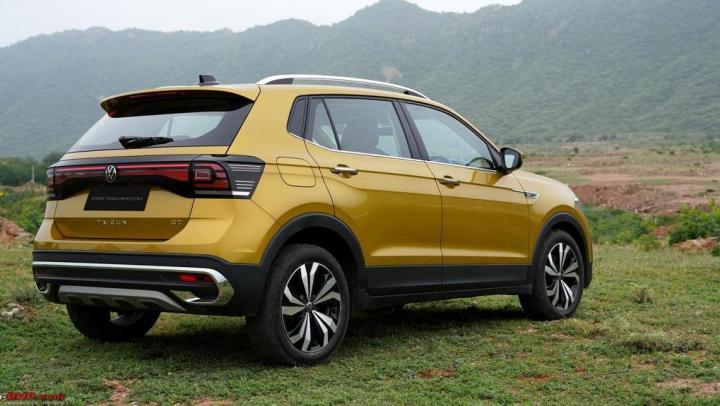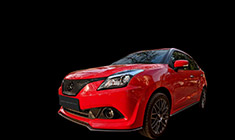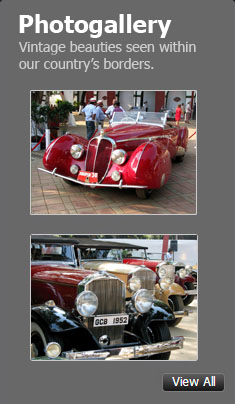News
Explained: Why Skoda & VW SUVs aren't doing well in India
Maruti S-Cross didn’t work, MG Astor is also not working, but Hector is doing better numbers due to an upright and imposing front stance.
BHPian pqr recently shared this with other enthusiasts.
SAVW got a combination of four things wrong with their MQB 27 IN platform-based SUV products.
- Price-to-size ratio.
- Price-to-feature ratio.
- Quality with respect to PQ25 platform-based products.
- Lack of diesel as a fuel choice.
Still, they got two things right.
- A driver’s car.
- A safe car.
Now I will try to elucidate these points.
Price-to-size ratio

Indians buy SUVs and crossovers for their imposing image from the outside and commanding position from the inside, which to a certain extent comes from the overall dimension and to a greater extent from design and stance.
In the past, Maruti S-Cross didn’t work despite being Maruti, and currently, MG Astor is also not working despite having a long feature list, but Hector is doing better numbers due to an upright and imposing front stance. They both got dimensions in the ballpark of the Hyundai Creta, but what about an upright stance and an overall imposing image? Same was the story for Ford Endeavour and Toyota Fortuner. The rear side of the Endeavour was not appealing.
Now coming to SAVW products, they have the same width as sub-4-meter crossovers (1.76-metre range), length less than segment benchmarks, and do not have an imposing stance. So it basically looks like a longer Cross-Polo.
Price-to-feature ratio
The 1.4L Hyundai Creta SX(O) was priced at ₹ 18.3 lakh, and the 1.5L Skoda Kushaq Style is priced at ₹ 19 lakh. Hyundai offers a panoramic sunroof, a better camera, powered seats, more functions for the digital instrument cluster, an EPB, remote connected features, rear seat recline, all-disc brakes, etc. for ₹ 70,000 less. Features matter, especially for family cars, and the SAVW is far behind in this segment. This is why Maruti tried to get most of the features for the Grand Vitara, though it lacks finesse, and it is doing better than the S-Cross. MG Astor still doesn’t sell well despite having features, as noted above, the overall value proposition is a combination of many things.
In some cases, SAVW has resorted to penny-pinching, like the omission of their hallmark one-touch all-power window up-down with an anti-pinch function. What a shame.
Quality with respect to PQ25
Quality is adherence to a standard within a tolerance limit. Now standards are set by PQ25 platform-based products like Vento and Rapid, and were diluted in MQB-based products. It may not be that apparent to average buyers, but what about their loyal customer base? They saw, they noticed, and with money in their wallets, they decided not to buy. Alienating loyal customers is a sheer blunder.
Lack of diesel as a fuel choice
SUVs still have a substantial diesel mix, especially when car sizes grow. Hyundai-Kia managed the BS6-RDE challenge with a cost-effective solution, and Tata and Mahindra too will offer diesel vehicles in the future in this very segment. Maruti is trying to substitute diesel with Toyota’s hybrid technology and the first in-segment CNG option. So how did diesel champions (for right and wrong reasons) like SAVW get it wrong to read the future market?
They got two other things right as well.
But are these really value drivers for Indian customers? The answer is no.
A driver’s car
Making a driver’s car is in the DNA of the group, so they got it right, as their platform can handle it better than Hyundai-Kia. But a driver’s car can be best enjoyed by the driver, as others often get tossed around when the driver is driving way too enthusiastically. So, what the rest of the passengers will do, at least in Creta, they can gaze up at the sky through the panoramic sunroof. And not everybody in India is an enthusiast, which is why the MG Hector is selling well despite its boat-like handling and lifeless petrol engine.
A safe car

Do Indians really care about safety? Not to a larger extent. The Hyundai Creta is doing better despite its low GNCAP score. It is not like Hyundai-Kia can’t make safe cars with high crash test ratings; it's just that they don’t for the Indian market unless government policy compels them to. In the absence of regulation, they are just minting money as the large majority of customers aren’t very safety conscious. Again, SAVW has this in their DNA, and they didn’t get it wrong as the cars were engineered in Wolfsburg, Germany.
What about brand reputation, niggles, and after-sales service?
Tata Nexon has a lot of issues, but it is doing best in its segment. Nissan in India made a comeback with the worst dealership network, just because of a product with the right value proposition - Magnite. So many buyers overlook a few things if the value proposition is very compelling, though these attributes also are value drivers and part of a value proposition.
Summary
Thus, the SAVW SUVs don’t turn out to be better family cars due to their lack of SUV stance, less in-cabin space, fewer features to engage fellow passengers, and higher price.
SAVW got the value proposition wrong for India 2.0 SUV products. They don’t have attributes that Indian customers actually value (care), so it is not doing well for now.
Enthusiasts will continue to buy and recommend, but their market size will be too small to support the volume needed to break even as per Indian industry standards.
Check out BHPian comments for more insights and information.


















_1_0.jpg)



